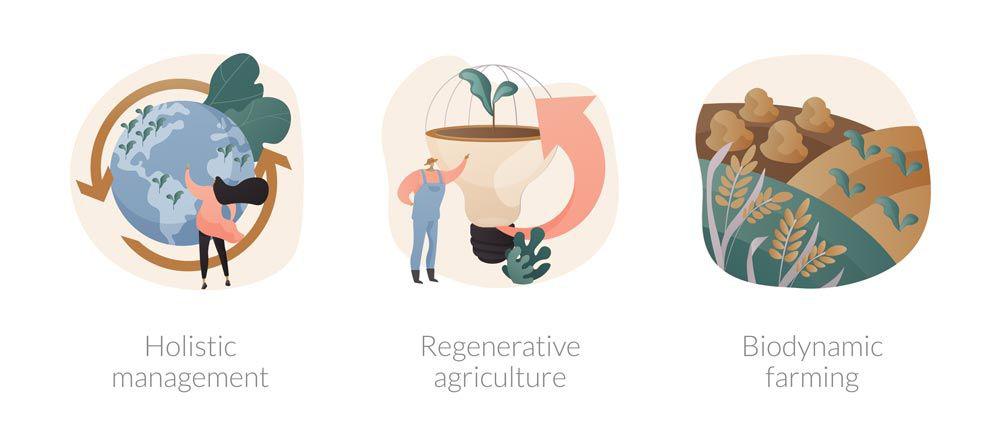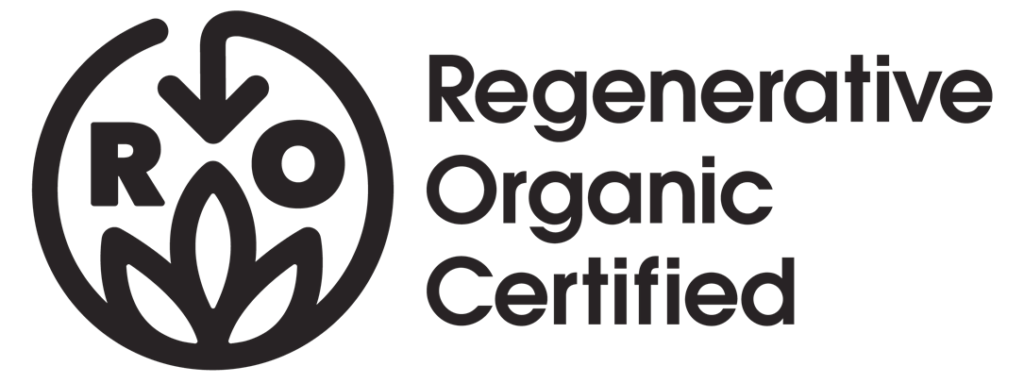Regenerative agriculture: Opportunity, or threat to organic?

Published: August 2, 2022
Category: The Non-GMO Blog, Regenerative Agriculture
By Jim Manson, Journalist
For decades, the term “regenerative agriculture” existed largely in the margins of the sustainable food debate. But in the last few years it has been catapulted to the heart of that debate.
Instrumental in the transition to sustainability
The United Nations Environment Programme (UNEP) say it will be instrumental in the transition to sustainable food and farming, while EASAC, Europe’s independent science advisory group, believes it is capable of “massive transformation.” Most striking of all is the way regenerative approaches are being so enthusiastically embraced by multinational food corporations and agri-industry giants like Unilever, Danone, Nestlé and Cargill.
But what does the rapid ascendancy of regenerative agriculture mean for organic farming? Intuitively, it feels that it ought to be to organic’s advantage—especially since many consider organic itself to be intrinsically regenerative. It’s true also that parts of the organic community are already firmly on board with regenerative thinking, through schemes such as Regenerative Organic Certified in the US. However, some prominent organic thinkers are much more cautious, and warn against uncritically embracing a term which they fear could complicate organic messaging and create confusion in the minds of consumers. Others warn that regenerative agriculture is being rapidly re-molded to suit the priorities of multinational businesses and amounts to a form of greenwashing.
So, is the rise of regenerative agriculture an opportunity for organic, or could it even present a threat? Let’s hear some of the arguments.
What is regenerative agriculture?
But first, what exactly is regenerative agriculture? In the broadest sense, it is a system of farming that aims to improve the resources its uses rather than deplete or destroy them by placing soil health at the heart of farming practices. Its proponents claim it produces low, even net positive, environmental and social impacts. It is also promoted for its capacity to sequester carbon and boost biodiversity. Techniques used in regenerative agriculture include crop rotation, use of cover crops, reduced tillage and compost application—practices, some would point out, that are rooted in organic.
The term regenerative agriculture dates back to the early 1980s, when it began to be used by the Rodale Institute in the US. The pioneering organic body adopted the term as a direct reaction to the popularizing of the word “sustainability” in environment circles, which it said did not present “a challenging enough goal.” Rodale formed the Regenerative Agriculture Association and published several books on the theme. Fast-forward to the early 2000s and we see the Institute focusing on regenerative agriculture’s potential for climate change mitigation. In a paper published in 2014, Rodale asserted that “we could sequester more than 100% of current annual CO2 emissions with a switch to common and inexpensive organic management practices, which we term ‘regenerative organic agriculture.’” It was also at around this time that other prominent thinkers in this area—Eric Toensmeier, Allan Savory, Abe Collins among them—were gaining international attention for highlighting regenerative agriculture’s potential to deliver game-changing climate change mitigation.
In the last few years, the momentum behind the regenerative agriculture movement has accelerated. As well as feeding through at the political and policy levels, regenerative ideas are being adopted—and acted on—by some of the world’s leading food businesses. Nestlé, Cargill, McDonald’s, PepsiCo, Danone and Unilever are among the major corporates who have now committed to sourcing a proportion of production using regenerative approaches.
 123rfLimited©rastudio
123rfLimited©rastudio
Ecosystem of good
U.S. food giant General Mills (with revenues of $17 billion) has pledged to convert a million acres of farmland to regenerative systems by 2030, to create an “ecosystem of good” intended to boost biodiversity, build farmer economic resilience and improve soil health and herd-wellbeing. Pointedly, the company has said that it “cannot afford to wait for organic, which accounts for just 1% of farmland in the U.S., to catch up.”
Major retailers are also getting on board. In the U.S., Amazon-owned Whole Foods Market has identified regenerative agriculture as its number one food trend for 2022. Mass channel supermarket chain Target meanwhile promises what it calls a “regenerative future,” to be realized throughout its Target Forward sustainability strategy. In the UK, upscale grocery retailer Waitrose (owner of Prince Charles’s Duchy Organic brand) says it will use its mixed arable and livestock Leckford Estate farm as a testbed for regenerative farming practices, using the insights to help the business meet its net zero emissions target.
Since many of these companies operate at a giant scale, there is potential for them here to make an enormous contribution in the transition to sustainable farming practices. Environment groups are aware of this, and many campaigners who criticize corporations for bad practices are reluctant to attack them when they try to improve them. Nonetheless there remains a big, and as yet unresolved, problem with regenerative agriculture: There is no universally agreed definition of what it is. So, in practice, regenerative agriculture can—and does—mean very different things to different people. And that makes it ripe for misappropriation.
Business as usual?
One of the most fiercely debated aspects of regenerative agriculture is the use of pesticides and chemical fertilizer. While in theory there is an ambition within the regenerative movement to reduce the use of chemical inputs, the reality is that conventional farmers using a regenerative, no-till approach often rely heavily on herbicides to manage weeds. Friends of the Earth (FOE) says it wants to see the debate on this issue amplified. The group recently published a report summarizing the science around how pesticides can damage the microbial life that drives carbon sequestration. Talking to the magazine Civil Eats, Kendra Klein, a senior staff scientist with FOE US, said: “Pesticides are rarely mentioned in many regenerative agriculture circles. We want to elevate the importance of pesticide reduction … especially now that regenerative agriculture is reaching the policy sphere.” She warns there is a real danger of regenerative being co-opted by the pesticide industry, adding that companies like Bayer (owner of Monsanto) and Syngenta are “using the same type of (regenerative) language” to provide “cover for continuing a very resource-intensive, energy- and greenhouse gas-intensive form of agriculture.”
FOE also wants to show that truly regenerative agriculture is about much more than carbon sequestration, an important point to make as regenerative agriculture and “carbon farming” are increasingly seen as interchangeable terms.
The changing debate
Attitudes to regenerative agriculture within the organic sector vary widely. Dutch organic commentator, Ronald Van Marlen, is outspoken on the issue. He believes regenerative agriculture has already been comprehensively hijacked by agri-industry interests, and that they have done it to create “a new marketing narrative that keeps them in the driving seat.” He says it is naive for the organic sector to be talking about building bridges with food and chemical industry multinationals. “You hear this argument that ‘we’re better together.’ But we are not. We don’t share the same values or the same principles.”
But recently, a more pragmatic view has been emerging. At a discussion last year organized by the Soil Association, panelists were asked about how the organic movement should respond to the popularity of regenerative thinking. Was it already influencing consumer purchasing decisions, and was there a risk it might displace organic? Martin Sawyer, CEO of Soil Association Certification, said regenerative was “clearly part of the new language that is emerging.” He said definitions of regenerative were not always clear (or the same), creating room for confusion, adding that the Soil Association wanted to help “have a better informed discussion around the whole agroecology and regenerative space and give it some shape.” Clare McDermott, Soil Association business development director, said regenerative agriculture presented both a challenge and an opportunity for organic. She added: “Consumers are looking for shortcuts. The only legally certified system—in terms of agroecology and regenerative approaches—is organic. Organic is regenerative. So, it’s up to us to show people how organic delivers regenerative outcomes.”
IFOAM World Board Member, Paul Holmbeck, says it is important to make the distinction between genuinely regenerative approaches, and what is essentially a marketing distraction. He says: “while I applaud any improvements in industrial farming, use of regenerative in the repackaging of industrial agriculture is getting out of hand. Regenerative has huge momentum globally, even if there is no definition of what it is. Marketing departments are fully mobilized, promising sustainability based on self-selected actions on farms where there are typically little or no guidelines or restrictions on negative practices. It’s hard to watch the pioneers and innovators in regenerative farming have their tireless efforts co-opted by chemical and agri-industry interests remaking their image.”
Holmbeck, along with a growing number of organic actors, is however broadly supportive of the concept of regenerative organic. This represents a shift in thinking within the organic community. Previously there has been some resistance to the term over concerns that it might unhelpfully suggest shortcomings in “basic” organic standards. There is a new openness to the idea of “making organic even better,” as Holmbeck puts it.
The Australian organic farmer (and former president of IFOAM Organics International), André Leu, sees a natural alignment between regenerative agriculture and the aspirations of Organic 3.0, especially its commitment to engaging with a range of food and farming approaches in the interest of smoothing the path to more sustainable systems.

Ready to ROC
There is a reason why the modern regenerative organic movement sprang up first in the United States, and it has little to do with the fact that the term was coined there. Tensions within the US organic movement have been growing for years over allegations that the USDA Organic scheme has steadily been enabling the “industrialization of organic”—most potently symbolized by the giant certified organic feedlots (CAFO) that are reportedly driving small organic dairy producers out of business, but also fueled by the USDA’s decision to allow soil-less growing (such as hydroponics) under organic rules. Dissatisfaction with the direction organic has taken has created fertile ground for the development of new standards, sometimes labelled “organic plus”—Regenerative Organic Certified and the Real Organic Project being the most prominent schemes.
But the Regenerative Organic Alliance, the coalition of organizations and businesses behind Regenerative Organic Certified (ROC), frames the ROC scheme very much as a positive development. Launched in March 2018, with the aim of developing practices that go beyond existing requirements of the US National Organic Program, ROC says it works with a number of farming, animal welfare and social justice bodies with existing “high-bar certifications” (such as Demeter and Fair For Life) to “help avoid duplicative audits or burdensome paperwork.” Crucially, certification under the scheme requires USDA Organic as a baseline.
The ROC scheme is based on a holistic, three-pillar approach—soil health, animal welfare and social fairness. Again, this is strikingly similar to the “four pillars” of IFOAM’s definition of organic. Some therefore continue to argue that the focus should be on assertively promoting organic standards, and restoring organic integrity where it has been eroded, rather than creating new “add on” schemes.
But others believe the hype around regenerative creates an opportunity for organic, especially in terms of its potential to improve and drive change in agriculture more widely. Writing in The Ecologist, Sarah Compson, associate director of standards innovation at the Soil Association, suggests that “organic and regenerative have the same North star” and that their “mutually agreeable visions can best be achieved through recognizing their synergies and finding smart ways to complement and collaborate with one another.”
Organic delivers
During the writing of this article, Unilever announced plans to direct €100 million into a new fund to support projects and companies that are accelerating the regenerative agriculture transition. To which, Paul Holmbeck replied: “Well, You could start by helping farmers transition to organic farming. It has identical goals and many of the same practices.”
Perhaps, then, the real opportunity for organic in the global rush towards regenerative agriculture is this: To tell a more compelling and urgent story about how organic delivers comprehensively on regenerative outcomes, with decades of real-word evidence to prove it.
Originally published in Bio Eco Actual, Independent & Free European Organic Media. Subscribe Now for Free: https://www.bioecoactual.com/en/subscription/
Organic & Non-GMO Insights August 2022




